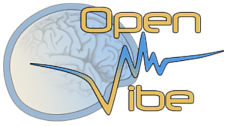Related Research Articles

The Apache HTTP Server, colloquially called Apache, is a free and open-source cross-platform web server software, released under the terms of Apache License 2.0. Apache is developed and maintained by an open community of developers under the auspices of the Apache Software Foundation.

OpenVMS, often referred to as just VMS, is a multi-user, multiprocessing virtual memory-based operating system designed for use in time-sharing, batch processing, and transaction processing. It was first announced by Digital Equipment Corporation as VAX/VMS alongside the VAX-11/780 minicomputer in 1977. OpenVMS has subsequently been ported to run on DEC Alpha systems, the Itanium-based HPE Integrity family of computers, and select x86-64 hardware and hypervisors. Since 2014, OpenVMS is developed and supported by a company named VMS Software Inc. (VSI).

The Squeak programming language is a dialect of Smalltalk. It is object-oriented, class-based, and reflective.

Jaron Zepel Lanier is an American computer philosophy writer, computer scientist, visual artist, and composer of contemporary classical music. Considered a founder of the field of virtual reality, Lanier and Thomas G. Zimmerman left Atari in 1985 to found VPL Research, Inc., the first company to sell VR goggles and Wired Glove. In the late 1990s, Lanier worked on applications for Internet2, and in the 2000s, he was a visiting scholar at Silicon Graphics and various universities. In 2006 he began to work at Microsoft, and from 2009 has worked at Microsoft Research as an Interdisciplinary Scientist.
Linux malware includes viruses, Trojans, worms and other types of malware that affect the Linux operating system. Linux, Unix and other Unix-like computer operating systems are generally regarded as very well-protected against, but not immune to, computer viruses.
Neuroinformatics is a scientific study of information processing by nervous systems from a computational perspective.
The Blue Brain Project is a Swiss brain research initiative that aims to create a digital reconstruction of rodent and eventually human brains by reverse-engineering mammalian brain circuitry. The project was founded in May 2005 by the Brain and Mind Institute of École Polytechnique Fédérale de Lausanne (EPFL) in Switzerland. Its mission is to use biologically-detailed digital reconstructions and simulations of the mammalian brain to identify the fundamental principles of brain structure and function.

Google Health is a branch of Google started in 2006. Originally designed as an to attempt to create a repository of health records and data, in order to connect doctors, hospitals and pharmacies directly. The project was introduced in 2008 and discontinued in 2012.

BrainMaps is an NIH-funded interactive zoomable high-resolution digital brain atlas and virtual microscope that is based on more than 140 million megapixels of scanned images of serial sections of both primate and non-primate brains and that is integrated with a high-speed database for querying and retrieving data about brain structure and function over the internet.

Scholarpedia is an English-language online wiki-based encyclopedia with features commonly associated with open-access online academic journals, which aims to have quality content.

Immersion into virtual reality (VR) is a perception of being physically present in a non-physical world. The perception is created by surrounding the user of the VR system in images, sound or other stimuli that provide an engrossing total environment.
Brain simulation is the concept of creating a functioning computer model of a brain or part of a brain. Brain simulation projects intend to contribute to a complete understanding of the brain, and eventually also assist the process of treating and diagnosing brain diseases.

OpenViBE is a software platform dedicated to designing, testing and using brain-computer interfaces. The package includes a Designer tool to create and run custom applications, along with several pre-configured and demo programs which are ready for use.
OpenWorm is an international open science project to simulate the roundworm Caenorhabditis elegans at the cellular level as a simulation. Although the long-term goal is to model all 959 cells of the C. elegans, the first stage is to model the worm's locomotion by simulating the 302 neurons and 95 muscle cells. This bottom up simulation is being pursued by the OpenWorm community. As of this writing, a physics engine called Sibernetic has been built for the project and models of the neural connectome and a muscle cell have been created in NeuroML format. A 3D model of the worm anatomy can be accessed through the web via the OpenWorm browser. The OpenWorm project is also contributing to develop Geppetto, a web-based multi-algorithm, multi-scale simulation platform engineered to support the simulation of the whole organism.
Vaa3D is an Open Source visualization and analysis software suite created mainly by Hanchuan Peng and his team at Janelia Research Campus, HHMI and Allen Institute for Brain Science. The software performs 3D, 4D and 5D rendering and analysis of very large image data sets, especially those generated using various modern microscopy methods, and associated 3D surface objects. This software has been used in several large neuroscience initiatives and a number of applications in other domains. In a recent Nature Methods review article, it has been viewed as one of the leading open-source software suites in the related research fields. In addition, research using this software was awarded the 2012 Cozzarelli Prize from the National Academy of Science.

Open Source Virtual Reality (OSVR) is an open-source software project that aims to enable headsets and game controllers from all vendors to be used with any games developed by Razer and Sensics. It is also a virtual reality headset that claims to be open-source hardware using the OSVR software.
Conor Russomanno is an entrepreneur, creative technologist, and lecturer, specializing in the development of advanced human-computer interfaces. He is the co-founder and CEO of OpenBCI, a company dedicated to open source innovation of brain-computer interface technologies. Conor is also a teacher, having taught graduate level courses at Parsons School of Design and NYU Tisch School of the Arts.

VRChat is a free-to-play massively multiplayer online virtual reality social platform created by Graham Gaylor and Jesse Joudrey. It allows players to interact with others as 3D character models. The game was released for Microsoft Windows as a standalone application compatible with the Oculus DK1 development kit on January 16, 2014, and via Steam's early access program on February 1, 2017. It supports the Oculus Rift, Oculus Rift S, Oculus Quest, and the newly added Oculus Quest 2 via the Oculus Store, the HTC Vive series, Windows Mixed Reality headsets and the Valve Index through SteamVR. Notably, it also supports full-body humanoid avatar tracking via Vive Trackers, though none of these accessories are mandatory to play.

LaTurbo Avedon is an avatar artist, curator, the designer and founder of Panther Modern. Their work emphasizes the practice of nonphysical identity and authorship since 2008-2009. They have explored the growing relationship between users and virtual environments. They create this body of work using the simulation tools of the current moment. The genesis of their identity occurred in various profile creation processes, eventually taking a more rigid form in Second Life.
A virtual kernel architecture (vkernel) is an operating system virtualisation paradigm where kernel code can be compiled to run in the user space, for example, to ease debugging of various kernel-level components, in addition to general-purpose virtualisation and compartmentalisation of system resources. It is used by DragonFly BSD in its vkernel implementation since DragonFly 1.7, having been first revealed in September 2006, and first released in the stable branch with DragonFly 1.8 in January 2007. The long-term goal, in addition to easing kernel development, is to make it easier to support internet-connected computer clusters without compromising local security. Similar concepts exist in other operating systems as well; in Linux, a similar virtualisation concept is known as user-mode Linux; whereas in NetBSD since the summer of 2007, it has been the initial focus of the rump kernel infrastructure.
References
- ↑ Madrigal, Alexis C. (2013-05-17). "Is This Virtual Worm the First Sign of the Singularity?". The Atlantic. Retrieved 2021-01-24.
- ↑ "Building a digital life form: OpenWorm, Open Source". phys.org. Retrieved 2021-01-24.
- ↑ "Creating the first virtual organisms: the OpenWorm digital life project - ExtremeTech". www.extremetech.com. Retrieved 2021-01-24.
- ↑ VirtualFlyBrain/uk.ac.vfb.geppetto, Virtual Fly Brain, 2020-05-22, retrieved 2021-01-24